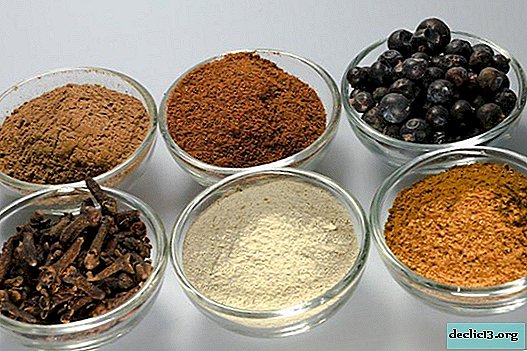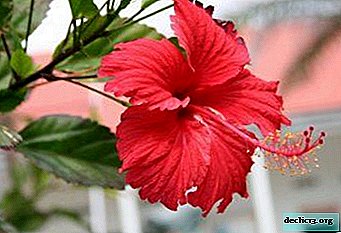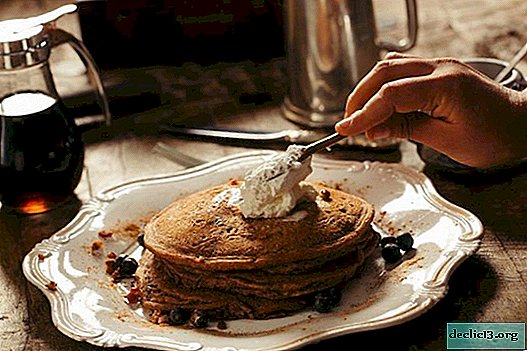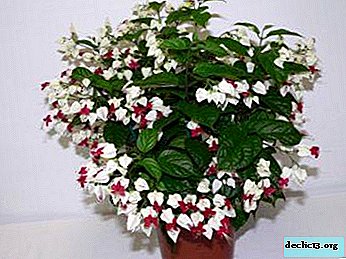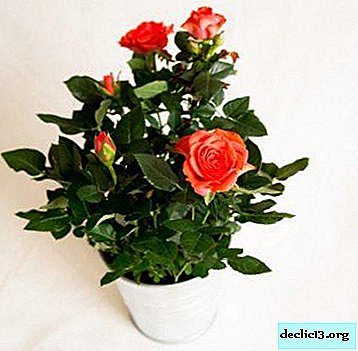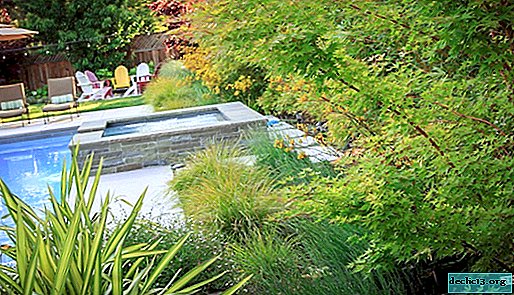The amazing medicinal properties of purple, tenacious, large and pungent stonecrops
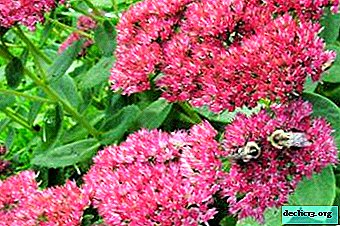
The accountant, or as he is also called Sedum, is one of the most famous and beloved by many flower growers for its unpretentiousness and species diversity plant. The accuser can not only decorate the flower garden, but also help with many serious diseases.
This article is about how its different varieties look, including rabbit cabbage and creaky. In addition, you will learn about the indispensable benefits of this wonderful flower, its healing properties and how to use it correctly.
How is the harvest and what parts of the grass are used?
Grass and root are used for collection.. The grass is harvested during the flowering period.
- Collect exclusively in dry weather.
- Cut it with a knife or scissors.
- The roots are dug from September to October. They are cut into small pieces and dried.
- Drying should be carried out in air under a canopy.
Dry the crushed parts of the plant, previously scalding them with boiling water. Wither in the sun and dry in a dryer or oven at 60-80 degrees.
Dried grass is stored for no longer than two years. And the roots are able to maintain their beneficial properties for three years.What varieties of useful plants are used in folk medicine?
The most common in folk medicine are four types:
- large, largest, better known as "rabbit cabbage" (lat. Hylotelephium maximum);
- purple, trefoil or violin (lat.Hylotelephium triphyllum);
- stonecrop caustic or young, rejuvenator, "living water" (Sedum acre);
- stonecrop tenacious or survivor (Sedum aizoon).
Big

The roots are thickened in the form of a spindle. Shoots upright 60 cm. Inflorescence wide corymbose-paniculate. The leaves are fleshy, oblong-elliptical. Flowers on a short stalk. Petals are ovoid, sharp, whitish in color, sometimes pink in color. Stamens are barely visible and fasten at the base of the petal. Has five free pistils with linear spouts.
Purple

Height from 20 to 60 cm. Has a straight woody stalk with branching at the inflorescence. The leaves are thick, juicy, fleshy with a wax coating. The flowers are dark pink, purple or raspberry. Represented by a thyroid inflorescence. Sharp petals 6 mm long. The root can be tuberous, pineal thickened or fusiform.
Tart

Herbaceous plant up to 10 cm tall with many stems. The leaves are fleshy, ovoid. Inflorescences are spreading and are represented by yellow flowers. This is a low, but dense bush with a thick and powerful rhizome.
Tenacious

Herbaceous perennial from 25 to 45 cm. The roots are fleshy, lignified with age. They are shortened and have cord-like roots. The stems are numerous and green, with a simple structure and quite strong. The leaves are green with an oblong-rhombic shape. Inflorescences are represented by umbrellas. Flowers 12-15 mm yellowish-green.
Structure
Stonecrop consists of:
- Vitamin C - strengthens the immune system, fights bacteria and infections;
- gums - normalizes cholesterol, removes toxins;
- acids (malic, oxalic, lactic and succinic) - have anti-inflammatory and antimicrobial effects;
- tannins - protect against infections, relieve inflammation, good for the digestive system;
- flavonoids - have decongestant and vasoconstrictive effects;
- alkaloids - protection against pathogens;
- glycosides - prevent arrhythmia, help the heart;
- Wax - normalizes the microflora, cleanses the body, eliminates dysbiosis;
- sahara - supplies energy;
- routine - prevents the development of cancer, normalizes arterial and venous pressure, prevents colds and infectious diseases;
- mucus is an anti-inflammatory and enveloping property.
As part of a large stonecrop:
- flavonoids;
- glycosides;
- catechins - protect the body from free radicals;
- acids (coffee and chlorogenic) - reduce the risk of diabetes, accelerate the transport function of blood;
- cynarin - has a vasodilating effect;
- coumarins - anticoagulating effect on blood, antibacterial effect.
Stonecrop purple consists of:
 Zalkaloids;
Zalkaloids;- tannins;
- glycosides;
- ascorbic acid - normalizes the work of the endocrine glands, strengthens the immune system;
- organic acids;
- ash - anti-inflammatory and disinfectant property;
- flavonoids;
- saponins - a regenerating, diuretic, calming action;
- mucus;
- sugar;
- wax.
A tenacious stonecrop has:
- tannins;
- sugar;
- oleic acid - creates cell membranes, blocks the absorption of cholesterol;
- gallic acid - forms an amyloid protein, eliminates fungi and viruses;
- flavonoids;
- coumarins;
- vitamin C.
Medicinal use of sedum
- Bunny cabbage is a powerful stimulant. It has a number of healing properties:
- hemostatic;
- stimulating;
- anti-tumor;
- wound healing;
- regenerative;
- tonic;
- anti-inflammatory.
Used in the treatment of periodontal disease, with chronic inflammation of the sinuses. Accelerate the healing of purulent cuts, wounds, burns. Able to remove warts.
- Sedum trefoil has an anti-inflammatory effect. Used to treat diseases of the genitourinary system. It has a stimulating effect on the work of the heart and central nervous system. Remedy for female infertility and epilepsy attacks. Stonecrop purple is used to treat cancer. It tones with general weakness. Below will be presented recipes for the use of purple sedum in folk medicine.
- The caustic sedum grass has anesthesia in the treatment of wounds, burns, ulcers. Used for the manufacture of medicines against malaria. Diuretic, able to cleanse the liver. Used to treat wounds, after animal bites and as a prophylactic against rabies.
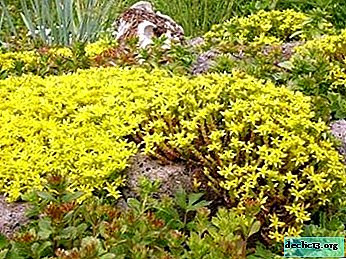 The survivor quickly treats serious diseases: anorexia, pulmonary tuberculosis, hepatitis, pneumonia, kidney disease. It will also cope with diarrhea, dysentery, and blood vessel diseases.
The survivor quickly treats serious diseases: anorexia, pulmonary tuberculosis, hepatitis, pneumonia, kidney disease. It will also cope with diarrhea, dysentery, and blood vessel diseases.It has the following properties:
- antiseptic;
- hemostatic;
- antipyretic;
- tranquilizing;
- detoxifying;
- antibacterial.
What do cancer treatment have to do with it?
Stonecrop purple has pronounced medicinal properties. Infusions of stonecrop are used during chemotherapy in order to increase immunity. For malignant tumors with different locations, it is recommended to use stonecrop juice with honey and red wine. Usually in this case, it is used together with other anti-cancer herbs. Also, with uterine myoma, prostate adenoma, prostatitis, special preparations are prepared using stonecrops.
Preparations, which include stonecrop, can block the development of malignant processes and can contribute to the resorption of tumors.Recipes from traditional medicine
From caustic
Decoction for dog bites, as a prevention of rabies
- 20 grams of dry grass;
- glass of water.
Lower the grass into the water. Boil. Then cool and strain. Drink 1 tbsp. l., three times a day. 7 days course.
With rheumatism - poultices for a sore spot
3 tbsp. spoons of dry grass are ground into powder. Tied in gauze, pour boiling water. Pull out immediately as soon as the grass is wet. Warm grass is applied to a sore spot.
From magenta
To lower blood pressure
- 1 tbsp. a spoon of dry grass;
- 0.2 ml of boiling water.
The grass is poured with boiling water. 5 minutes to boil. Cool, strain. Apply 3 tbsp. l., 3 times a day with meals.
Epilepsy Powder
Grinding the grass into powder, take 2 times a day for 1 tsp, washed down with water. The course of treatment is 8-12 weeks.
From the big
Leaf infusion for heart failure
- 1 tbsp dry grass;
- 0.2 ml of boiling water.
Pour boiling water over the grass of a large stonecrop. Insist 5 hours, strain. Take 1-2 tbsp. 3-4 times a day.
With kidney disease
- 20 grams of grass;
- 200 ml of water.
The grass is poured with water and boiled for 10 minutes. Filter and take 25 ml 3 times a day.
From tenacious
Against inflammatory processes
- 1 tsp herbs;
- 1 cup boiling water.
Pour boiling water over the grass and leave for an hour. Strain and apply for 1 tbsp. 3 times a day.
Ointment for burns, purulent wounds
1: 4 ratio. Grind grass into powder. Mix the powder with pork fat.
Contraindications
- Pregnancy.
- Personal intolerance.
- Hypertension.
- Increased nervous irritability.
- The absence of hydrochloric acid in the gastric juice.
So, in this article, the characteristics and properties of stonecrops of a large, caustic, tenacious, violin were given, recipes for treating various diseases with the help of these herbs are presented. Sedum is not only an unpretentious plant, but also able to help with various problems of the body, while it has not only useful properties, but also contraindications.

 Zalkaloids;
Zalkaloids; The survivor quickly treats serious diseases: anorexia, pulmonary tuberculosis, hepatitis, pneumonia, kidney disease. It will also cope with diarrhea, dysentery, and blood vessel diseases.
The survivor quickly treats serious diseases: anorexia, pulmonary tuberculosis, hepatitis, pneumonia, kidney disease. It will also cope with diarrhea, dysentery, and blood vessel diseases.